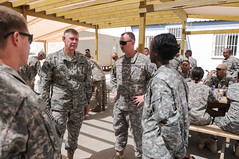4/24/2014
| FOR IMMEDIATE RELEASE | PRESS RELEASE #CM: 042414 |
| Subject : | City of Long Beach Selected as Beta Site to Help Test Earthquake Early Warning System (EEWS) |
| Contact : | Reginald Harrison, Deputy City Manager 562.570.9250 Reginald.Harrison@longbeach.gov |
| The City of Long Beach has been selected by the California Institute of Technology (CalTech) and the United States Geological Survey (USGS) to serve as a beta site for California Integrated Seismic Network (CISN) Earthquake Early Warning System (EEWS). The EEWS uses existing seismic networks to detect moderate to large earthquakes very rapidly so that a warning can be sent before destructive seismic waves arrive to locations outside the epicenter. Once fully developed, these warnings could allow people time to take some protective action and could also trigger automatic responses to safeguard critical infrastructure. "We are always looking for ways to better prepare for a disaster, and even a few seconds of warning before the force of an earthquake reaches us can save lives and protect property," Mayor Bob Foster said. What this could mean for City operations, residents and businesses in Long Beach in the future, is that certain preventative actions might be able to occur with a few second of warning, such as:
As a beta site, certain City of Long Beach departments will test the system and provide feedback, so that the developers can further refine their algorithms and software to ensure that the system integrates with real work delivery mechanisms, procedures and product benefits. This testing will be conducted at no cost to the City. USGS currently issues rapid, automatic earthquake information, which is available to the general public via the Internet, email, text messages, and social media. You can sign up for these messages on their website at http://earthquake.usgs.gov/earthquakes. More information on the EEWS can be found at the CISN website at http://www.cisn.org/eew/. As the City continues to enhance its emergency response training, residents are strongly advised to prepare to be self-sufficient for at least five days in the event of a large-scale incident. Create an emergency plan for your home and family, put together an emergency supply kit (food, water, tools, etc,) and make sure all of your family members know how to contact one another. Further, all residents are encouraged to sign up for Community Emergency Response Team (CERT) training. The Long Beach Fire Department conducts this free program to train the public how to become self-sufficient during major disasters. More information is available at http://bit.ly/BePreparedLongBeach and www.longbeach.gov/fire/cert. |
















































